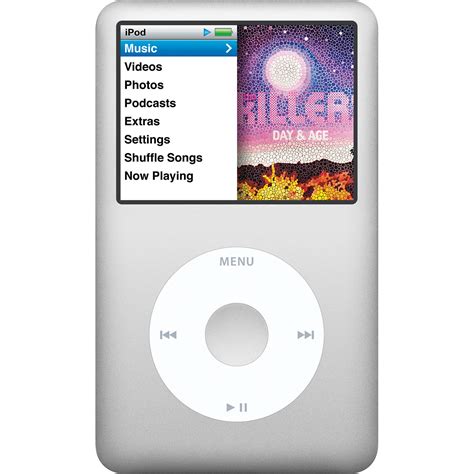Apple’s AirTag has rapidly become one of the most popular tracking devices, offering a seamless way to keep tabs on personal belongings such as keys, wallets, bags, and even pets. However, like any electronic device, the AirTag is powered by a battery, which raises questions about its longevity, maintenance, and replacement. For users and potential buyers, understanding how long an AirTag battery lasts is crucial for evaluating its practicality, cost-effectiveness, and long-term usability. This article provides a comprehensive analysis of AirTag battery life, exploring the factors that affect it, how to maximize its lifespan, and what to expect from a user experience perspective. By delving into technical specifications, usage scenarios, and expert recommendations, we aim to equip you with the knowledge needed to make the most of your AirTag investment.
The AirTag uses a user-replaceable CR2032 lithium coin cell battery, which Apple claims can last approximately one year under standard usage conditions. While this lifespan might seem straightforward, it is influenced by various factors, including tracking frequency, environmental conditions, and user habits. For instance, frequent use of the AirTag’s precision finding feature or its built-in speaker to locate items can drain the battery faster than occasional usage. Additionally, the AirTag’s battery performance may vary depending on the quality of the replacement battery used when the original runs out. To provide a balanced perspective, this article will not only examine Apple’s advertised battery performance but also explore real-world data, user experiences, and actionable strategies for extending battery life.
Key Insights
- The AirTag battery typically lasts about one year under normal usage.
- Frequent use of features like precision finding and sound alerts can reduce battery life.
- Replacing the battery with a high-quality CR2032 cell ensures optimal performance.
Understanding AirTag Battery Specifications and Usage Dynamics
The AirTag is powered by a CR2032 lithium coin cell battery, a widely available and inexpensive power source used in many small electronic devices. This battery type is known for its compact size, long shelf life, and relatively stable voltage output. According to Apple, the AirTag is designed for a battery life of up to one year, assuming normal usage patterns. But what exactly constitutes "normal usage"? Apple defines this as a scenario where an AirTag is used for approximately four sound alerts and one precise location search per day.
In reality, battery life can vary based on several factors:
- Frequency of Active Features: Features like precision finding and sound alerts consume more power than passive Bluetooth tracking. Users who rely heavily on these features may see a shorter battery lifespan.
- Environmental Factors: Extreme temperatures, whether hot or cold, can affect lithium battery performance. For instance, using an AirTag in freezing conditions may cause the battery to drain faster.
- Signal Interference: The AirTag relies on Bluetooth Low Energy (BLE) for communication. Environments with significant Bluetooth interference or poor signal quality may require the AirTag to work harder, potentially reducing battery life.
Another technical consideration is the type of CR2032 battery used for replacement. Not all CR2032 batteries are created equal; some feature child-proof coatings that can interfere with the AirTag’s electrical contacts. Apple specifically advises against using batteries with such coatings, as they may not work reliably in the device. Opting for a high-quality, uncoated CR2032 battery from a reputable manufacturer ensures consistent performance and longevity.
Practical Tips to Maximize AirTag Battery Life
While the AirTag is designed to be low-maintenance, there are practical steps users can take to extend its battery life beyond the standard one-year mark. These strategies involve optimizing usage patterns, understanding environmental impacts, and selecting the right replacement battery when needed.
1. Optimize Feature Usage
One of the most effective ways to maximize battery life is to limit the use of power-intensive features like sound alerts and precision finding. For example, instead of using the AirTag’s speaker to locate an item every time, consider relying on its last known location in the Find My app. Similarly, use precision finding sparingly, especially if the item is within a predictable area like your home or office.
2. Monitor Battery Health
The AirTag provides a battery status indicator in the Find My app, allowing users to monitor its health over time. While the app doesn’t display a precise percentage, it does give a general sense of when the battery is running low. Regularly checking this status can help you plan for timely replacements, avoiding situations where the AirTag stops functioning unexpectedly.
3. Store and Use in Optimal Conditions
To preserve battery life, avoid exposing the AirTag to extreme temperatures. Lithium batteries perform best in moderate conditions, so storing the AirTag in hot cars or using it in freezing outdoor environments should be minimized. Additionally, ensure that the AirTag is not placed near strong magnetic fields or sources of interference, which can impact its Bluetooth connectivity and power efficiency.
4. Choose High-Quality Replacement Batteries
When it’s time to replace the AirTag battery, selecting a high-quality CR2032 cell is crucial. Brands like Duracell, Panasonic, and Energizer are often recommended for their reliability and performance. Avoid generic or low-cost batteries, as they may have inconsistent voltage outputs or shorter lifespans. Also, ensure the replacement battery does not have a child-resistant coating to avoid compatibility issues.
Real-World Performance and User Experiences
While Apple’s one-year estimate for AirTag battery life is generally accurate, real-world experiences can vary. Many users report that their AirTags last slightly longer than a year under light to moderate usage. However, heavy users—such as those who frequently rely on precision finding or attach AirTags to pets that roam outdoors—often find themselves replacing the battery sooner.
For example, a user who uses the sound alert feature several times a day to locate keys may notice a significant reduction in battery life compared to someone who only uses the AirTag occasionally. Similarly, attaching an AirTag to a bike or pet that frequently moves in and out of Bluetooth range can result in more frequent location updates, which consume additional power.
Interestingly, some users have also observed minor variations in battery life depending on the brand of the replacement CR2032 battery. High-quality brands tend to deliver consistent performance, while cheaper alternatives may lead to reduced longevity or even operational issues. This underscores the importance of selecting a reliable battery when performing replacements.
Environmental and Sustainability Considerations
As with any battery-powered device, sustainability is an important consideration for AirTag users. CR2032 batteries, while small, can have an environmental impact if not disposed of properly. Lithium batteries should be recycled at designated facilities to prevent harmful chemicals from entering the environment. Many electronic stores and recycling centers accept used batteries, making it easy for consumers to dispose of them responsibly.
Additionally, Apple’s decision to use a user-replaceable battery in the AirTag is commendable from a sustainability perspective. Unlike devices with sealed, non-replaceable batteries, the AirTag allows users to extend its life indefinitely by simply replacing the battery. This design choice not only reduces electronic waste but also enhances the product’s overall value and usability.
How often should I replace the AirTag battery?
Under normal usage, the AirTag battery should last approximately one year. However, if you frequently use features like precision finding or sound alerts, you may need to replace the battery sooner. Regularly check the battery status in the Find My app to ensure timely replacement.
What type of battery does the AirTag use?
The AirTag uses a CR2032 lithium coin cell battery. When replacing the battery, choose a high-quality, uncoated CR2032 cell from a reputable brand to ensure optimal performance.
Can extreme temperatures affect AirTag battery life?
Yes, extreme temperatures can impact the performance of the AirTag battery. Lithium batteries perform best in moderate conditions, so avoid exposing the AirTag to excessive heat or cold to maximize battery life.
How do I dispose of used AirTag batteries?
Used CR2032 batteries should be recycled at designated facilities to prevent environmental harm. Many electronic stores and recycling centers accept these batteries, making proper disposal easy and accessible.


